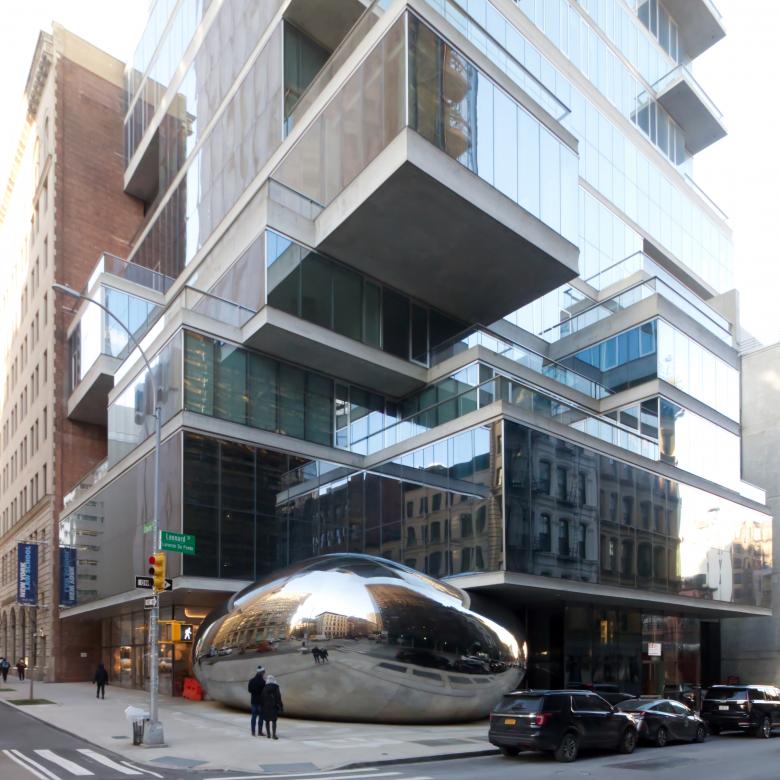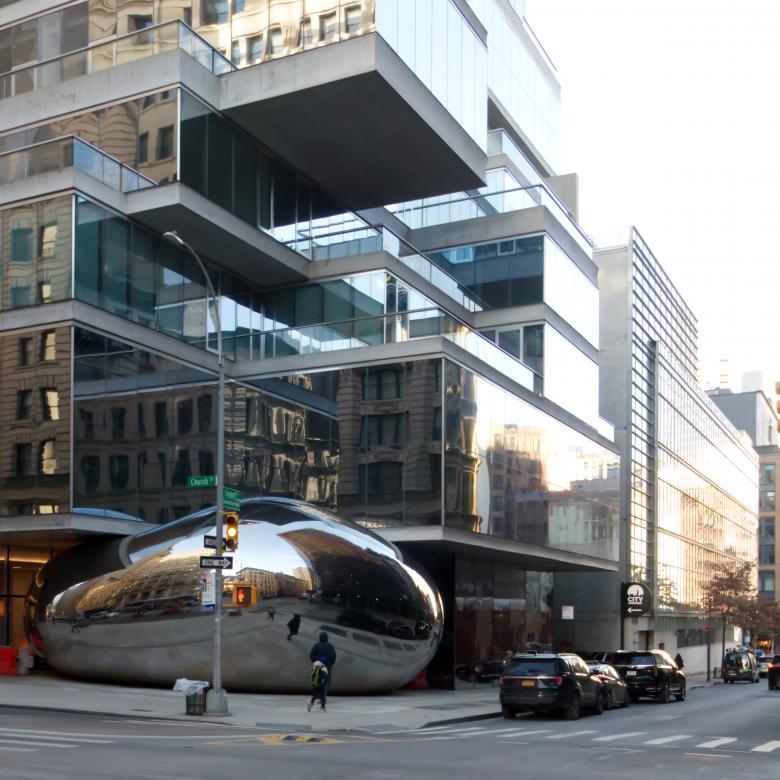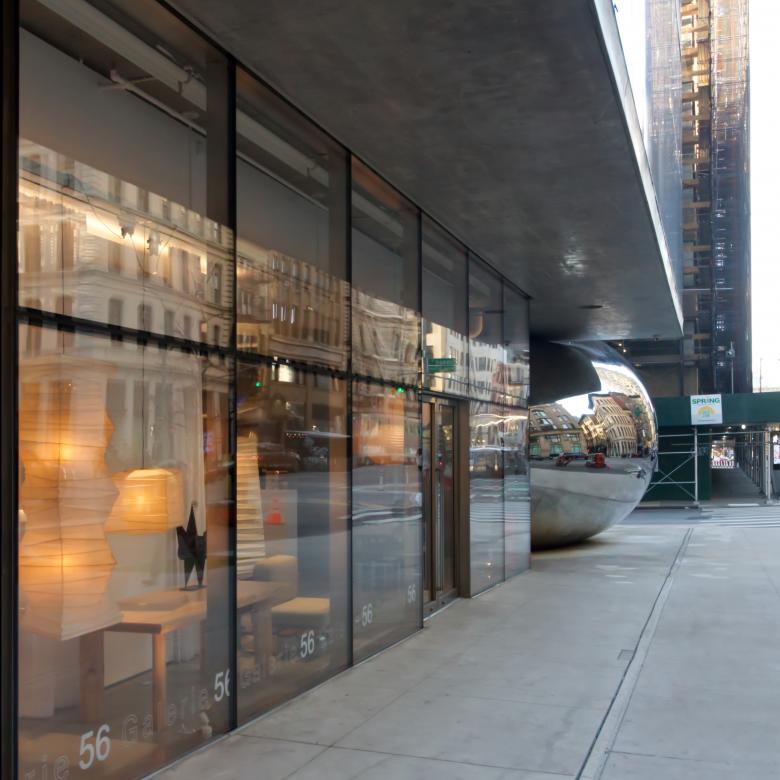Anish Kapoor at 56 Leonard
Anish Kapoor's bean-like sculpture at 56 Leonard Street wrapped up construction this week, more than five years after the completion of the slender 57-story apartment tower designed by Herzog & de Meuron. World-Architects stopped by on a chilly February morning to see it in person and take some photos.
With the completion of the yet-to-be-named polished stainless steel sculpture this week, the total timespan for the artwork comes to fifteen years: Kapoor's website gives a date of 2008 and shows early concepts that involved squeezing balloons beneath the cantilevered floors at the base of a model of the tower. The idea of a soft object deformed under the weight of the tower was carried through to the last iteration of the sculpture — the version that was built over the course of three years, starting in February 2019. While the name of the large reflective piece could be “The Balloon” or some reference to its initial idea, the name that many people in and beyond Tribeca have adopted is “The Bean,” a reference to the unofficial name of Cloud Gate, the similarly bulbous, mirror-finished Kapoor sculpture in Chicago's Millennium Park.
The differences between the 56 Leonard sculpture and Cloud Gate are just as numerous as the similarities, but aside from the markedly different settings, sizes, and means of access (or lack thereof), the construction of the new sculpture applied lessons learned from the sculpture completed in Chicago around 2005. An email written by the team at Performance Structures, the fabricator of the 56 Leonard sculpture, was posted in February 2018 at Tribeca Citizen, which has followed the artwork's installation closely for years. The communication says, in part:
“Cloud Gate was assembled in Chicago from the finished plate sections and support framework, built at our facility, and then all the joining seams were welded together on site. After the seams were welded, they all needed to be ground down, and the seam zones sanded and polished to match the rest of the plate surfaces. This on-site seam welding was very laborious and extremely costly.”
To make 56 Leonard's “Bean” cheaper and less time-consuming, “ it was decided to build the precision components such that they could be tightly fit together, with the seams thereby becoming nearly invisible hair line cracks.”
The correspondence continues: “We have fabricated plate sections to create vertical segments of the sculpture, or ‘slices.’ Pairs of these slices are then joined by bolts and ground smooth and polished as a unit, across the joining seam. Once a pair of slices have been finished in this way, they are separated and each slice is joined with another slice that fits on the other side, and then that new joining seam is ground and polished. In this way all of the slice sections will have been ground and polished across all of the seams, so that when they are all joined together they will form a single smooth sculptural form.”
To quote at length one last time from that correspondence, Performance Structures pointed out the differences between the suspension systems for each sculpture:
“In the case of Cloud Gate, the sculpture is supported by a large base frame bolted to the plaza, which also is comprised of two large ring structures. The shell of the sculpture is suspended by means of a series of spring connectors joining the shell framing to the support rings. The Leonard Street sculpture has a different support mechanism. Instead of a single large support frame, each slice has its individual support frame. The support frames for the bottom slices are each bolted to the plaza, and the slices themselves are suspended by means of cables. When completed, the entire sculpture will be suspended with a system of cables and spring members so that it will be able to move slightly with changes of temperature and wind and snow loads.”
So technical challenges provided delays early in the fabrication process, but the subsequent delays following the start of construction in 2019 happened, obviously, due to the pandemic. Kapoor, who lives in London (though he's rumored to also have an apartment up in 56 Leonard), worked with a team based in the UK. His team could not get back into the United States until September 2021, meaning that for roughly two years the sculpture sat incomplete, with just over half of its “slices” installed, secured with plywood and rung with bollards.
The 56 Leonard sculpture is Kapoor's first permanent artwork in New York City. It follows temporary installations that included a Sky Mirror at Rockefeller Center in 2006 and Descension, a whirlpool installed at Brooklyn Bridge Park in 2017.
Although it was bitterly cold on my visit this morning, and my fingers hurt after taking these photos, I spotted a few people stopping in their tracks and taking a closer look at the sculpture: seeing themselves and the distorted reflection of Tribeca in the process. It took a long time, but so far it seems worth the wait.






